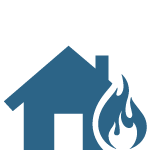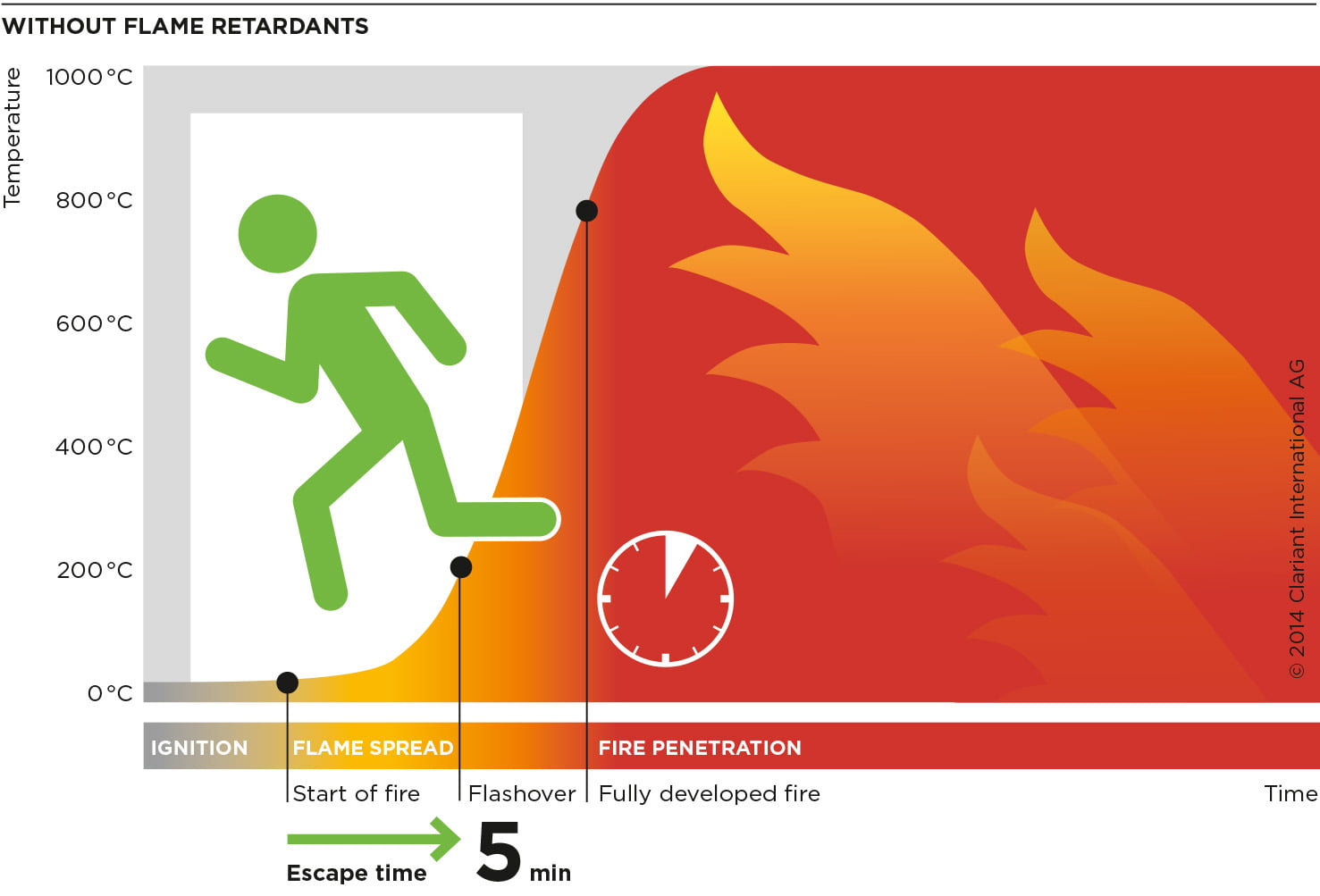FIRE SAFETY
Fire standards and testing save lives and property
Product safety standards or national regulations (e.g. building codes) require different types of fire testing, such as resistance to ignition by different heat sources (equivalent to smouldering, small or larger flame), levels of heat release after ignition, smoke density, acidity and toxicity. Fire tests can be small, medium or large scale, and can be performed on standardised specimen (material testing) or on the final item (product testing). Although testing is standardised and simplified, to allow rapid results at acceptable costs, every single fire test does reflect real-life fire scenarios.
In our modern homes there are many different flammable materials, present in quantity, including furniture and cushions, bedding, carpets, plastics in electronics and household pipes and fittings, building insulation, cables etc. Although the use of FRs to improve fire safety of some products obviously cannot prevent a fire starting if other materials are ignited (e.g. paper, cooking equipment), the use of FRs can prevent the fire spreading, or slow its development, so giving more escape time to occupants and more time for fire fighters to intervene before flashover, which is when fire gases ignite and a room becomes a fireball with temperatures rapidly escalating to 800 – 1000°C making escape or survival impossible. Compliance with fire standards means that, in our homes and offices, flame retardants can prevent the ignition of treated materials by small, local heat sources (e.g. electrical short-circuit, battery failure), delay fire development and reduce heat emission during burning. This reduces the risk of fire spreading and gives more time before flashover. Increasing time to flashover from 2-3 minutes to 10-15 minutes can make the difference between escape or fatalities, especially if smoke detectors are installed to give the alarm.
PIN FRs also reduce smoke emissions and corrosivity, and so are widely used in public transport or in sites with sensitive electronic installations.
Different fire tests are designed to simulate different real-life fire risk scenarios. For example, UL94 V testing simulates internal risks in electrical apparatus (e.g. from a short circuit or overheating), testing ignition and burning drip release from a small heat source, whereas EN45545 for train seats simulates external ignition (e.g. arson) using a larger heat source, and looks at heat release, smoke density and smoke toxicity, to assess fire risk and inhibition of escape in public transport.
Fire testing cannot accurately predict the dangers of a full-scale fire, nonetheless they are the best tool available to assess product fire safety, and thus contribute to saving lives and preventing fire injuries and damage. Official studies have shown that appropriate fire safety regulations do save lives (e.g. Statistical report on the effectiveness of the UK Furniture and Furnishings (Fire) (Safety) Regulations, 1988, Greenstreet Berman, December 2009: http://greenstreet.co.uk/publication/a-statistical-report-to-investigate-the-effectiveness-of-the-furniture-and-furnishings-fire-safety-regulations-1988/).
You will find further information about how PIN flame retardants enable fire standards to be met, and so contribute to fire safety, on this website under “Applications”.
How Flame Retardants can increase escape time in fires
Flame retardants reduce the risk of ignition and fire spread of many plastic and textile materials which results in more available escape time for occupants. Time to flashover can increase from 5 minutes to 15 minutes which can make the difference between escape and fatalities.
Bear in mind that the escape time includes the time to discover the fire, alert other people, take the decision to call the fire brigade, take own actions to extinguish or take the decision to evacuate the building. The times and temperatures in the graphs are typical numbers, but can vary according to the circumstances and materials involved.
The 3 phases of fire and the protecting features of flame retardants

Ignition source
Prevent ignition
Possibly self-extinguish

Flame spread
Slow down flame spread
Reduce heat release
Delay flash-over

Fire penetration
Prevent the collapse of structures, e. g. steel columns protected by intumescent coatings
Prevent fire moving to adjacent room or building compartment

